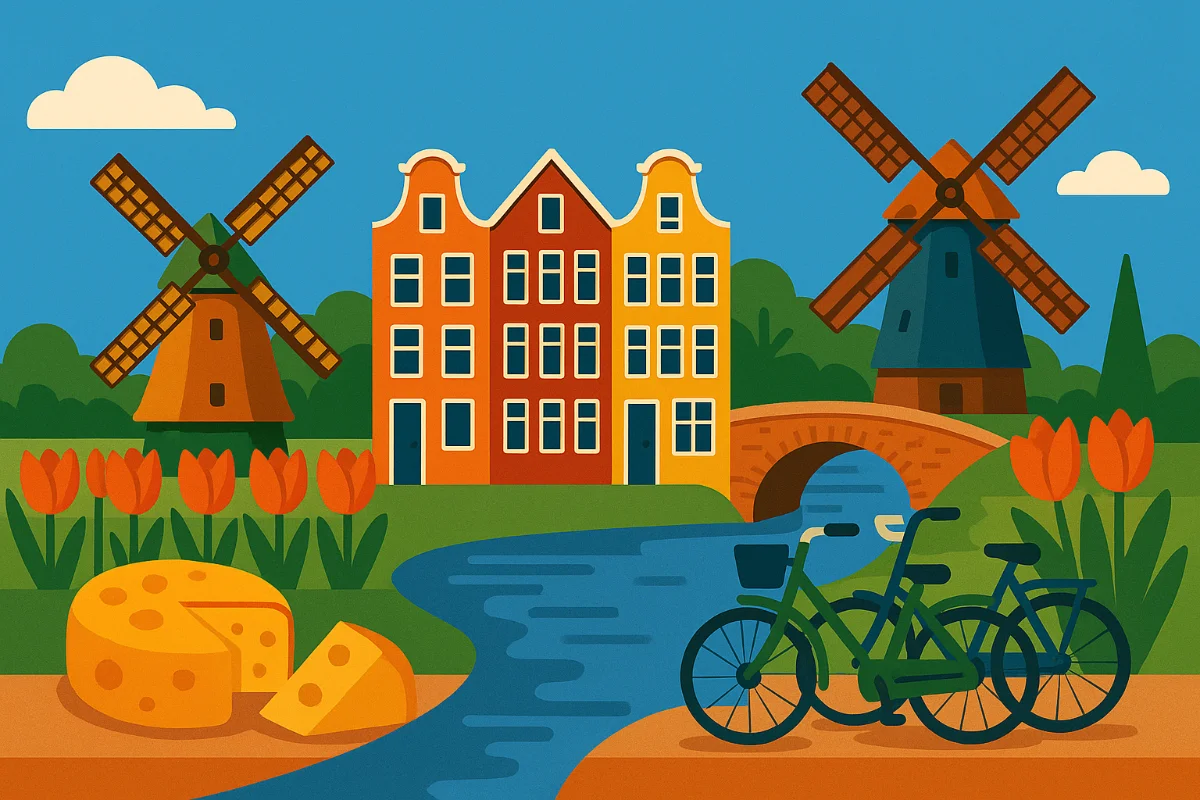Introduction: Pointing Things Out
Demonstrative pronouns are words we use to point to specific people or things. In English, we use "this," "that," "these," and "those." Dutch has four similar words: dit, dat, deze, and die. The choice depends on two factors: the noun's type (de-word or het-word, singular or plural) and its perceived distance from the speaker (close by or far away).
The Four Demonstratives
Here's how they work:
1. Close By (This / These):
- Use
ditfor singularhet-nouns that are close. dit huis(this house)dit boek(this book)dit meisje(this girl)- Example:
Dit boek is interessant.(This book is interesting.) - Example:
Wat is dit?(What is this? - referring to something close)
- Use
dezefor singularde-nouns OR any plural noun that are close. deze fiets(this bicycle)deze man(this man)deze stoel(this chair)deze huizen(these houses - plural ofhet huis)deze fietsen(these bicycles - plural ofde fiets)- Example:
Deze stoel is comfortabel.(This chair is comfortable.) - Example:
Ik wil deze appels.(I want these apples.)
2. Far Away (That / Those):
- Use
datfor singularhet-nouns that are far away. dat huis(that house)dat boek(that book)dat meisje(that girl)- Example:
Dat huis daar is te koop.(That house over there is for sale.) - Example:
Wat is dat?(What is that? - referring to something distant)
- Use
diefor singularde-nouns OR any plural noun that are far away. die fiets(that bicycle)die man(that man)die stoel(that chair)die huizen(those houses)die fietsen(those bicycles)- Example:
Die auto rijdt snel.(That car drives fast.) - Example:
Ken je die mensen?(Do you know those people?)
Summary Table
This table helps visualize the choices:
| Distance from Speaker | Noun Type | Demonstrative |
|---|---|---|
| Close By | Singular het-word |
dit |
| Close By | Singular de-word |
deze |
| Close By | Plural noun (any gender) | deze |
| Far Away | Singular het-word |
dat |
| Far Away | Singular de-word |
die |
| Far Away | Plural noun (any gender) | die |
Examples with Nouns:
het boek(book):dit boek(this book),dat boek(that book),deze boeken(these books),die boeken(those books).de fiets(bicycle):deze fiets(this bicycle),die fiets(that bicycle),deze fietsen(these bicycles),die fietsen(those bicycles).
Using Demonstratives Independently
Dit, dat, deze, and die can also stand alone (without a noun following them) when it's clear what you're referring to.
Wat is dit?(What is this?)Dat is mijn huis.(That is my house.)Ik wil deze.(I want this one / these ones - referring tode-word or plural nearby)Neem je die?(Are you taking that one / those ones? - referring tode-word or plural far away)
Demonstratives and Adjective Endings
Remember that dit and dat (before singular het-words) affect adjective endings:
het grote huis(the big house)een groot huis(a big house)dit grote huis(this big house) - Add -edat grote huis(that big house) - Add -e
Demonstrative pronouns (dit, dat, deze, die) are used to point out specific items based on de/het/plural status and distance. Master the table above to choose the correct one.

